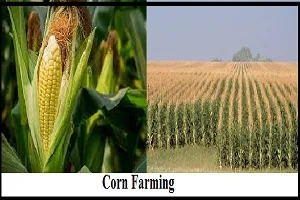Corn, scientifically known as Zea mays, is one of the most widely cultivated crops globally. Its significance spans various aspects, including agriculture, nutrition, industry, and culture. Often referred to as maize in many parts of the world, corn holds a prominent position in the agricultural landscape and plays a vital role in global food security.
Historical Roots and Cultivation
Corn has a rich history dating back thousands of years. Originating from Mesoamerica, where indigenous peoples first domesticated it, corn has evolved through selective breeding into numerous varieties adapted to diverse climates and soil conditions. Today, it is cultivated on every continent except Antarctica, with major producers including the United States, China, Brazil, and Argentina.
Agricultural Importance
Corn is prized for its versatility and productivity. It serves as a staple food for millions of people worldwide, providing essential nutrients such as carbohydrates, fiber, vitamins, and minerals. Beyond human consumption, corn is extensively used in animal feed, contributing to the livestock and poultry industries. Additionally, it plays a crucial role in crop rotation and soil conservation due to its deep root system, which helps prevent erosion and improves soil structure.
Industrial Applications
The utility of corn extends far beyond the dinner table. Its derivatives are utilized in various industries, including biofuel production, pharmaceuticals, textiles, and manufacturing. Corn ethanol, derived from the fermentation of corn starch, is a renewable fuel additive that reduces greenhouse gas emissions and lessens dependence on fossil fuels. Corn starch finds its way into a multitude of products, serving as a thickening agent in food, a base for biodegradable plastics, and even a component in adhesives and paper manufacturing.
Cultural Significance
Corn holds deep cultural and symbolic significance for many societies. In indigenous cultures of the Americas, corn is revered as a sacred plant and is intricately woven into rituals, traditions, and folklore. Corn festivals and ceremonies celebrate the harvest season and honor the vital connection between humanity and the land. Furthermore, corn's symbolism extends into art, literature, and cuisine, reflecting its profound influence on human civilization.
Challenges and Future Prospects
Despite its widespread cultivation and diverse uses, corn faces several challenges, including climate change, pests, diseases, and market fluctuations. Climate variability poses a significant threat to corn production, affecting yield and quality. Additionally, concerns over land use, water usage, and genetic modification raise questions about the sustainability of corn farming practices.
Looking ahead, advancements in agricultural technology, such as precision farming, genetic engineering, and sustainable practices, offer promising solutions to enhance corn productivity while minimizing environmental impact. Moreover, research into drought and pest-resistant varieties could help ensure food security in the face of changing climatic conditions.
Corn Farming: A Detailed Guide
Corn farming involves several stages, from land preparation to harvest. Here are the detailed steps for growing corn:
1. Variety Selection
Firstly, select corn varieties that are suitable for the climate and soil conditions in your location. Varieties that are resistant to diseases and adapted to local environmental conditions will provide better yields.
2. Land Preparation
Clear the land of weeds and other plant debris. Ensure the soil is adequately fertile by applying organic or chemical fertilizers according to soil analysis. Perform proper soil tillage by plowing it deeply and evenly.
3. Seed Planting
Plant corn seeds at the appropriate depth, usually around 3-5 cm, with the recommended spacing between plants. Choose the optimal planting time according to the planting season in your area.
4. Plant Maintenance
Provide proper care during the plant's growth period. This includes additional fertilization during the vegetative growth phase, regular watering especially when the plants are in the ear formation phase, and pest and disease control using safe pesticides and organic control methods if possible.
5. Pruning and Thinning
If necessary, perform pruning of excessive leaves and thinning to ensure optimal light and air circulation among the plants.
6. Harvesting
Corn is usually ready for harvest after 70-100 days after planting, depending on the variety. Look for signs of maturity such as a change in seed color to yellow and hardening of the seed coat. Harvest corn using appropriate tools and store it properly to prevent damage and seed loss.
7. Post-Harvest
After harvesting, properly dry and store the corn seeds to prevent excess moisture and pest infestation. If the seeds will be used as seed for the next season, ensure they are stored under optimal conditions to maintain their viability.
8. Crop Rotation
After harvest, consider rotating crops with other plants to maintain soil fertility and reduce the risk of accumulating diseases and pests.
By carefully following these steps and paying attention to the needs of corn plants throughout their growth cycle, you can achieve maximum harvest yields and ensure the sustainability of your corn farming endeavor.
In conclusion, corn stands as a cornerstone of global agriculture, providing sustenance, economic opportunities, and cultural significance to communities worldwide. As we navigate the complexities of the modern world, it is imperative to recognize the importance of corn and work towards sustainable practices that ensure its continued abundance for generations to come.
That is the article Guide to cultivating corn for beginners. If there are any deficiencies or errors in writing this article, Baraja Farm express their deepest apologies. Please leave a wise message in the comments column provided. Thank you for visiting, hopefully it's useful.
Other reading materials, can help with school assignments, click Pustaka Pengetahuan
To increase insight and knowledge, please click Berbagai Reviews
For tutorial on how to cultivate, please click Baraja Farm Channel
Social media please click facebook







0 Komentar